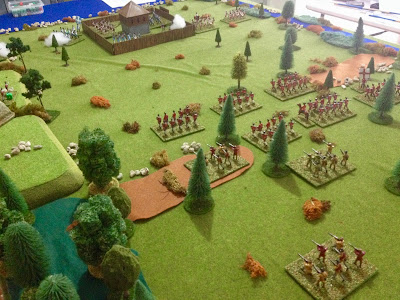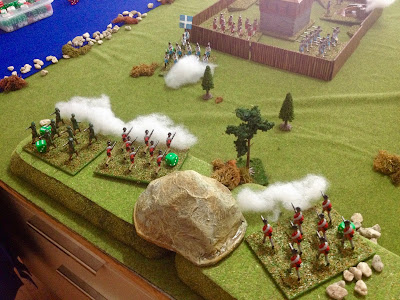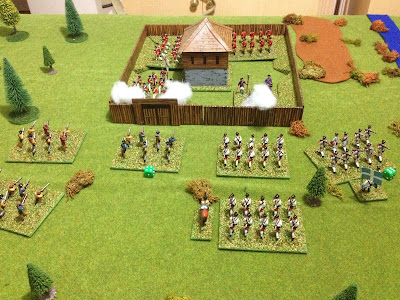A quick search to get some idea of how to layout the tabletop delivered this contemporary drawing.
 |
| A contemporary drawing of Fort Le Boeuf |
 |
| Tabletop setup |
French
Commander Bougainville (A0D1)
3 Regulars (representing 1 regiment)
1 Artillery (must be located in the fort)
Army resolve = 5
British
Commander Braddock (A0D1)
6 Regulars (representing 2 regiments) and 1 of the units will be Grenadiers
Army resolve = 7
Game Report
The French under the command positioned a half their force in advance of the fort in the hope the British line would be disrupted moving across difficult terrain and they could inflict some casualties before retiring in line with the fort.
 |
| French open fire at the advancing British line. |
 |
| Return fire from the British line found its mark and the French took quite a few casualties. |
 |
| Failing to retire quickly meant another volley of the British line which resulted in the loss of a unit and their commander Bougainville. |
This turned out to be a really quick game played out over just 4 turns. Just one of those unusual games campaigns throw up and ones you would never think of setting up and playing yourself.
What happened to Commander Bougainville? Does he live to fight another day? A quick D6 roll decided his fate (1-2 escapes injury, 3-4 wounded and needs to convalesce for a couple of months, and 5-6 killed in action). A 2 was scored and he survives!






















































